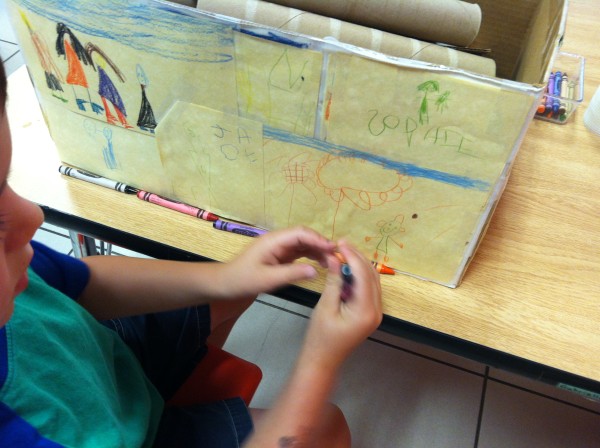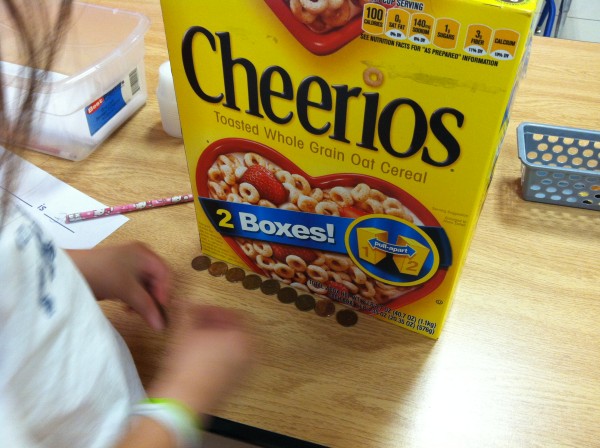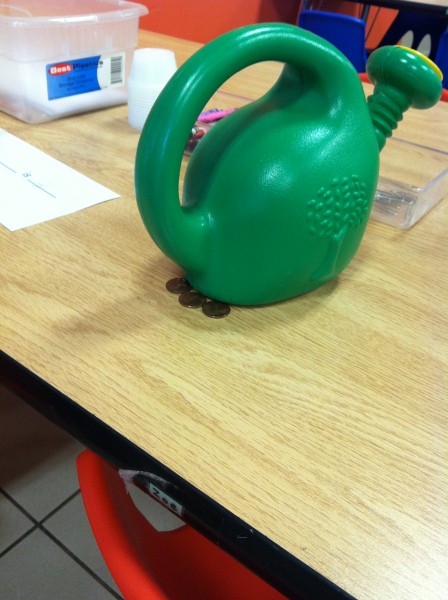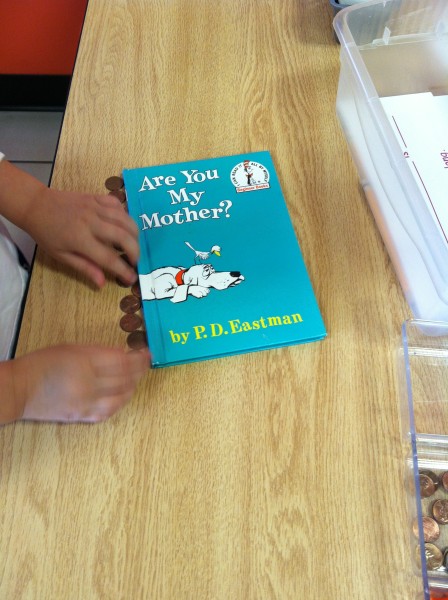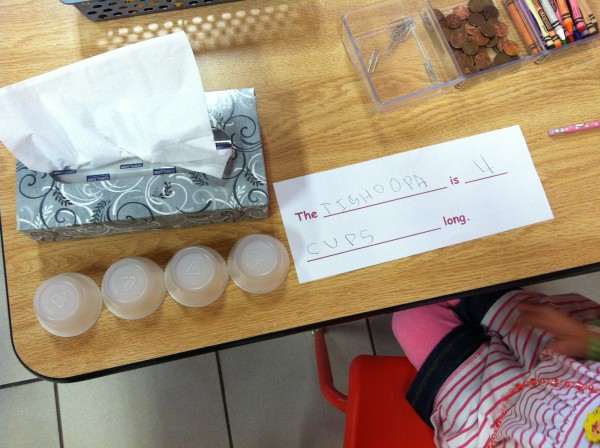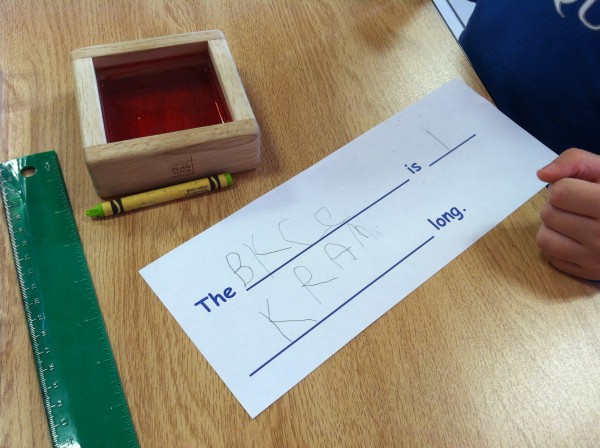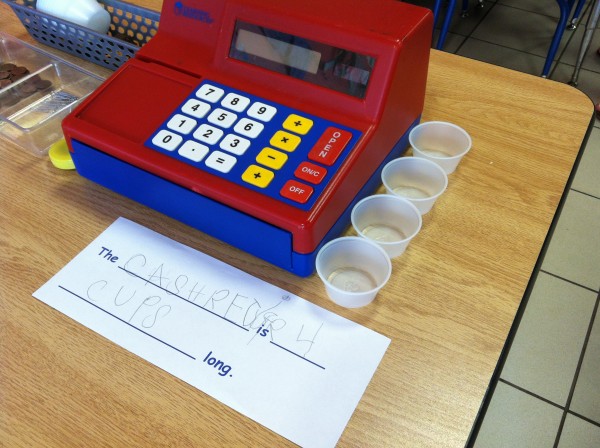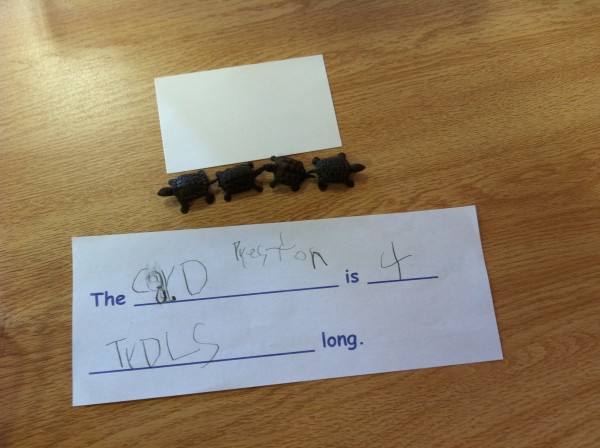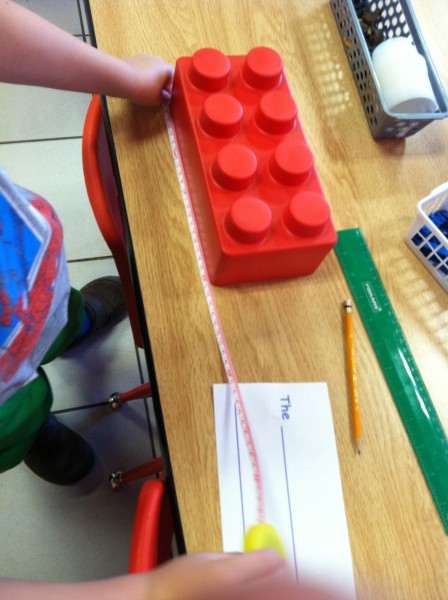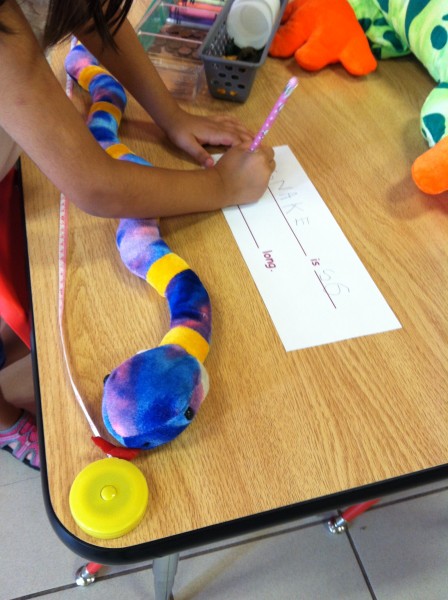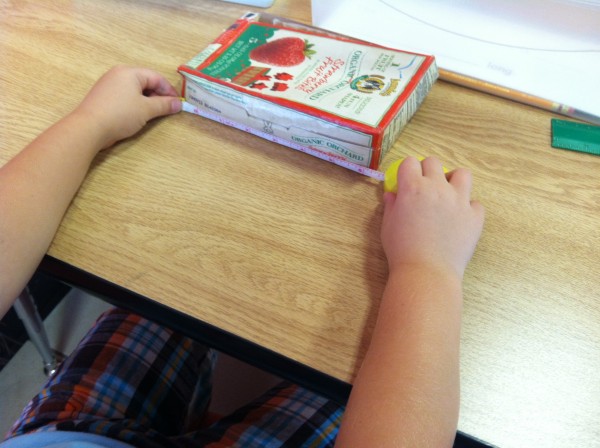We spent a couple of weeks this summer measuring the lengths of various objects in our classroom. We had previously tried a number of measuring activities with simplified inch rulers. My students already understood that longer objects have bigger numbers associated with them. But I want to foster an early understanding that a measurement of length implies some number of equally-sized units stretched end-to-end, and that the number we end up with depends on the size of those individual units.
That’s a pretty abstract concept for a young child, so we made it more concrete. Instead of using inches and centimeters, we measured lengths with crayons, pennies, cups, paper clips, legos, cards, and toy turtles.
Incorporating Literacy Skills
Because I’m always looking for ways to incorporate literacy skills, we also wrote the words for what we measured. We used this simple page (pdf) to write the measured object, the number of units, and the type of units. It took a little bit of scaffolding at first, but the kids caught on fast.
Inches and Centimeters
Late in the week, we pulled out rulers and tape measures. We looked at how much bigger inches are than the centimeters. That means it takes more centimeters to get from one end of an object to the other, just like it takes more pennies than crayons. With that in mind, we measured a few objects the old fashioned way.
